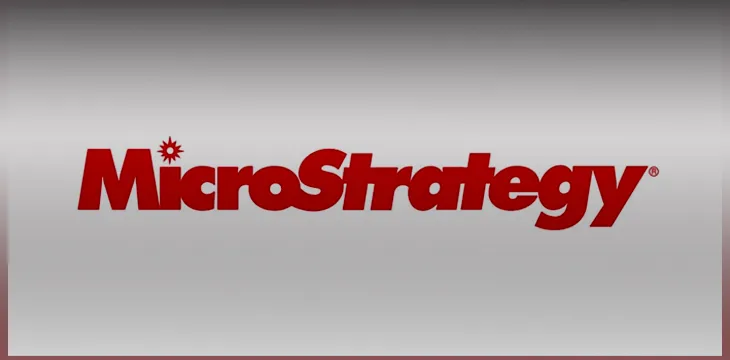|
Getting your Trinity Audio player ready...
|
Michael Saylor and MicroStrategy (NASDAQ: MSTR) have taken up a lot of space in the news thanks to their aggressive accumulation of BTC. This has been treated by many as a harbinger of institutions finally boarding the BTC bus. However, as is often the case with digital asset hype, the red flags are too many to ignore.
Michael Saylor is the CEO of MicroStrategy, which started life as a business intelligence company. You probably already know MicroStrategy for their much-publicized purchase of $425 million worth of BTC over August and September of this year. At the start of December, they added another $50 million worth to that total. Then, in November, they doubled down, announcing that plans to pour even more money into BTC via a $400 million capital raise.
This is apparently part of MicroStrategy’s plans to convert its cash reserves into BTC. Saylor, apparently concerned by inflation as money is printed to deal with the economic fallout of the COVID pandemic, says that holding cash doesn’t make sense. This apparent enthusiasm for BTC has been accompanied by an aggressive PR campaign which has seen Saylor insist he “didn’t buy it to sell it, ever,” say that BTC is safer than gold, and predict that both public and private companies would be doing the same within three to six months.
MicroStrategy is not an ETF/ETP. ETFs & ETPs exist to invest in stocks, bonds or commodities – they’re investment companies per ’40 Act. Like Apple & Microsoft, MicroStrategy is an operating company traded on a stock exchange. We just happen to hold BTC in our treasury reserves.
— Michael Saylor⚡️ (@saylor) December 12, 2020
Saylor’s comments and the investments of MicroStrategy has been held up as yet another successful litmus test on the road to BTC mass adoption. When a company like MicroStrategy is calling BTC safer than cash—and backing up that talk with action—it is certain to become a rallying point for those who are excited about Bitcoin’s future. MicroStrategy itself has already done very well for itself off the back of these announcements: six months ago it was trading at US$117. Now, it sits at US$290—though November’s announcement was met with trepidation by the market, and Citi analyst Tyler Radke downgraded MicroStrategy to a ‘sell’, saying that company was overextending on BTC at the expense of its core business.
Still, MicroStrategy is riding the BTC wave as digital asset prices increased over 2020. Despite the buzz, there are enough red flags here to indicate that the brakes should be pumped. MicroStrategy’s move of pumping BTC is reminiscent of how Bernie Madoff’s group pumped shares and investment to raise money just before they crashed; it can be recalled that Madoff and the firm he ran faced charges of securities fraud in connection with the $18 billion Ponzi scheme. Madoff pleaded guilty to 11 federal crimes—as well as admitted to operating the largest private Ponzi scheme in history—and was sentenced to 150 years in jail with $170 billion restitution.
MicroStrategy—and Michael Saylor—have a chequered past. In 2000, Saylor, together with two other MicroStrategy officials, were accused of fraud by the U.S. Securities and Exchange Commission (SEC) for falsely reporting massive MicroStrategy profits despite the company losing money, artificially inflating its value. This cooking of the books was picked up on by auditors and is what led to the SEC charges. Ultimately, Saylor and the other two were forced to settle with the securities regulator. Though he did not admit or deny the accusations, Saylor was hit with a $350,000 penalty and was forced to return $8.3 million to shareholders.
The period in which Saylor was falsely reporting MicroStrategy’s profit was accompanied by a similar PR blitz, with the stock seeing an 80-fold increase in value over this time and was lauded as a success story; Saylor promised to contribute $100 million toward the founding of an ‘Internet university.’ These plans never materialized, and Saylor was settling with the SEC within a year.
The company survived the controversy, though it has been the subject of criticism since. The chief investment officer of hedge fund firm Apex Capital called for MicroStrategy to be overhauled, which would include the ousting of Saylor. They complained that the company’s senior staff were ‘not fully engaged in the day-to-day operations of the business or agonizing over inferior shareholder returns’ and, for example, hadn’t held a shareholder conference call for almost 10 years. In a similar vein, Saylor has come under criticism for racking up massive personal expenses, well in excess of what would be expected even for larger companies.
This by itself should cause anyone to view MicroStrategy’s actions—and Saylor’s words—here with suspicion, but it becomes especially fishy when Saylor has already dismissed the value of BTC in a not-so-long-ago tweet:
“Bitcoin days are numbered. It seems like just a matter of time before it suffers the same fate as online gambling.”
#Bitcoin days are numbered. It seems like just a matter of time before it suffers the same fate as online gambling.
— Michael Saylor⚡️ (@saylor) December 19, 2013
All of this is an important backdrop for anyone examining the hype surrounding MicroStrategy.
With MicroStrategy now holding over 40,000 BTC, an investment in MicroStrategy—which still bills itself as a software company—is an investment in BTC. It would be an inefficient way to gain a stake in Bitcoin, to be sure—but MicroStrategy’s BTC investment has only grown since the first purchase back in August, and is almost sure to grow further in the near future. How long before MicroStrategy becomes a de-facto BTC exchange traded fund (ETF)—an investable fund which tracks the performance of BTC—the likes of which regulators and stock exchanges have thus far refused to allow? And if investors are using MicroStrategy for BTC exposure, that ignores MicroStrategy’s to-date successful core business. Doing so runs the real risk of drawing the ire of activist investors unconvinced or inconvenienced by the company’s new direction.
It is obvious that Saylor is aware of the growing hype around BTC’s price, but he’s also aware of its limitations. Saylor said it himself in comparing BTC to gold, an admission that his interest in BTC does not come from its utility.
Could it be that Saylor and MicroStrategy are yet another institution profiting from the naïve excitement surrounding BTC’s potential for massive return? Does Saylor see the Bitcoin fever of 2020 simply another way for Saylor to pump up his own company’s share price? Is this simply a way to turn MicroSystems into the elusive Bitcoin ETF that many have been trying to get past regulators for years? Is it a combination of all of the above, with Saylor both capitalizing from and further fuelling a BTC boom being driven by speculators and other companies looking to do the same?
As with the steep graph lines showing BTC growing in value, MicroStrategy and Michael Saylor should be treated with great suspicion. The fraud scandal in 2000 should make it clear that investor trust and honest market participation mean very little to them: what matters is how much value can be wrung from investors over and above what reality would ever justify—no matter how many of their investors and no matter how much the market is short-changed as a result.
Follow CoinGeek’s Crypto Crime Cartel series, which delves into the stream of groups—from BitMEX to Binance, Bitcoin.com, Blockstream, ShapeShift and Ethereum—who have co-opted the digital asset revolution and turned the industry into a minefield for naïve (and even experienced) players in the market.

 06-30-2025
06-30-2025 





